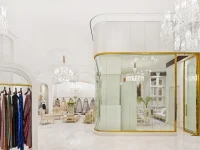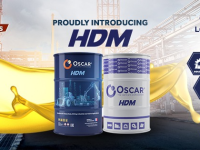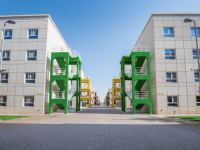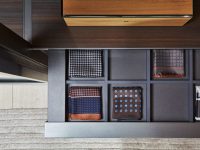Essential Tips For Commercial Fit Out Projects
When planning a commercial fit-out project, the process can be exciting, but it’s also filled with challenges that demand careful planning and decision-making. From designing functional workspaces to ensuring compliance with regulations, there are many factors to consider. Here are a few mentioned by the best commercial fit out contractors.
Plan for your business needs:
The first step in any fit-out project is to assess your business needs. Think about how your company operates and how your office or retail space should reflect this. For example, do you need open-plan offices to nurture collaboration, or are private spaces more suitable for productivity? Take into account the size and layout of the space, as well as any future growth plans. Understanding these factors upfront will help you create a space that aligns with your business goals.
Set a realistic budget:
Establishing a clear and realistic budget is important for any commercial fit-out project. While it’s easy to get excited about upgrading your space, you need to be mindful of costs and avoid going over budget. Consider the scope of the work and the materials involved, as well as any unforeseen expenses. If necessary, work with a professional to get an accurate estimate and manage costs effectively. This will allow you to avoid surprises and keep your project on track.
Focus on compliance and safety:
Ensure your fit-out project complies with local building codes and safety standards. Depending on the type of business and location, there may be specific regulations regarding accessibility, fire safety, and environmental sustainability. It’s important to engage with experts who are familiar with these requirements to ensure the project meets all necessary legal and safety standards. This can prevent costly delays and avoid the need for future modifications.
Choose the right design and materials:
The design and materials you choose will have a significant impact on the overall aesthetic and functionality of your space. Whether you are looking for a modern, minimalist design or a more traditional look, the materials you use should reflect your brand’s identity and create a comfortable, efficient environment. Work with your commercial fit-out contractor to select materials that are both durable and visually appealing, while also being suitable for the specific needs of your business.
Key Considerations For Modern Commercial Fit-Out
A modern commercial fit-out is more than just a renovation—it’s about creating a functional, aesthetic, and efficient space that serves the needs of both employees and clients. In today’s fast-paced business land, an office or retail space must reflect a brand’s identity, promote productivity, and adapt to evolving technological needs. As such, when planning your commercial fit-out, it’s essential to take several considerations into account to ensure a successful outcome. Engaging with skilled commercial fit out contractors will also help ensure all aspects are addressed thoughtfully.
Flexible layout design:
The layout of your commercial space should be adaptable to changing needs. Modern businesses often require spaces that can be reconfigured for different activities, whether it’s for team collaboration, client meetings, or individual tasks. Flexible design elements, such as movable partitions, modular furniture, and multi-purpose areas, can offer the versatility required in today’s workplace. Ensure your design encourages both collaboration and privacy while offering the flexibility to grow with your business.
Sustainable materials and practices:
Sustainability is no longer just a trend; it’s a key consideration in commercial fit-outs. Incorporating eco-friendly materials and energy-efficient technologies can reduce operational costs and contribute to a healthier work environment. Look for options such as energy-efficient lighting, natural materials like bamboo or reclaimed wood, and low-emission paints. Additionally, consider using sustainable practices, such as recycling and waste minimisation during the construction process. These choices can demonstrate your commitment to environmental responsibility while supporting your company’s sustainability goals.
Technology integration:
In the digital age, smooth technology integration is a key consideration for any modern commercial fit-out. From high-speed internet to smart lighting and automation systems, your space should be designed to accommodate the latest technology. This includes provisions for power outlets, data points, and cable management to support various devices. Future-proofing your space by anticipating future technological advancements is also important, ensuring your workspace remains relevant and functional for years to come.
Employee well-being and comfort:
Creating a comfortable environment for your employees should be a priority. Features that improve well-being, such as ergonomic furniture, proper lighting, ventilation, and access to natural light, can positively impact productivity and job satisfaction. Including wellness spaces, such as quiet rooms or break areas, can also contribute to a more positive and balanced workplace culture. When employees feel comfortable and supported, they are more likely to perform well and remain engaged.









